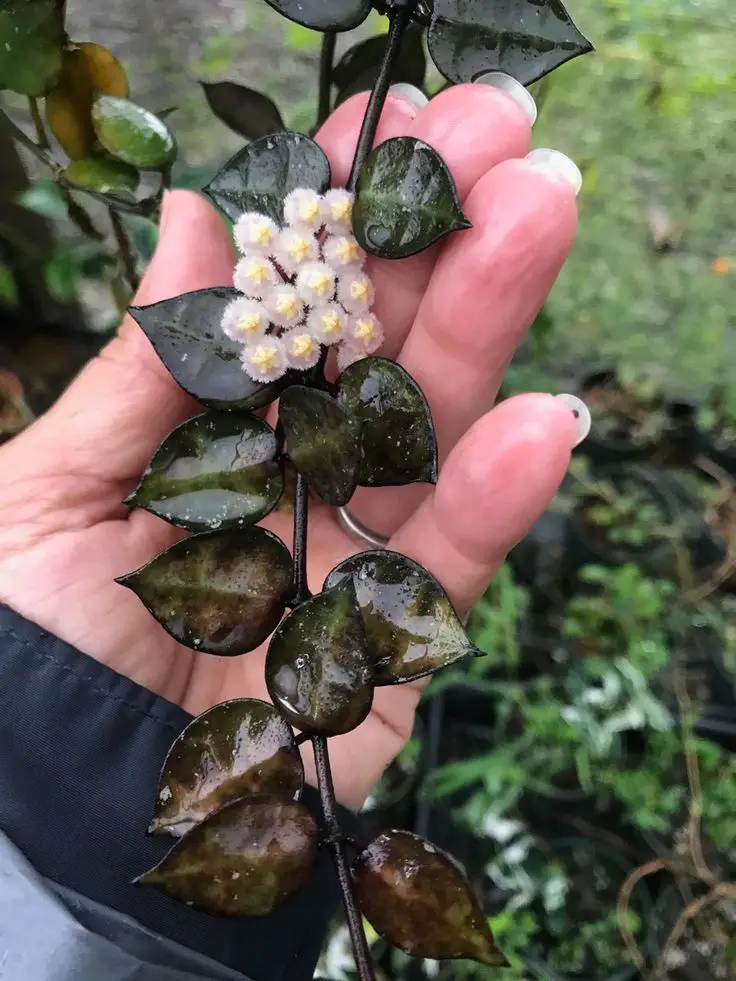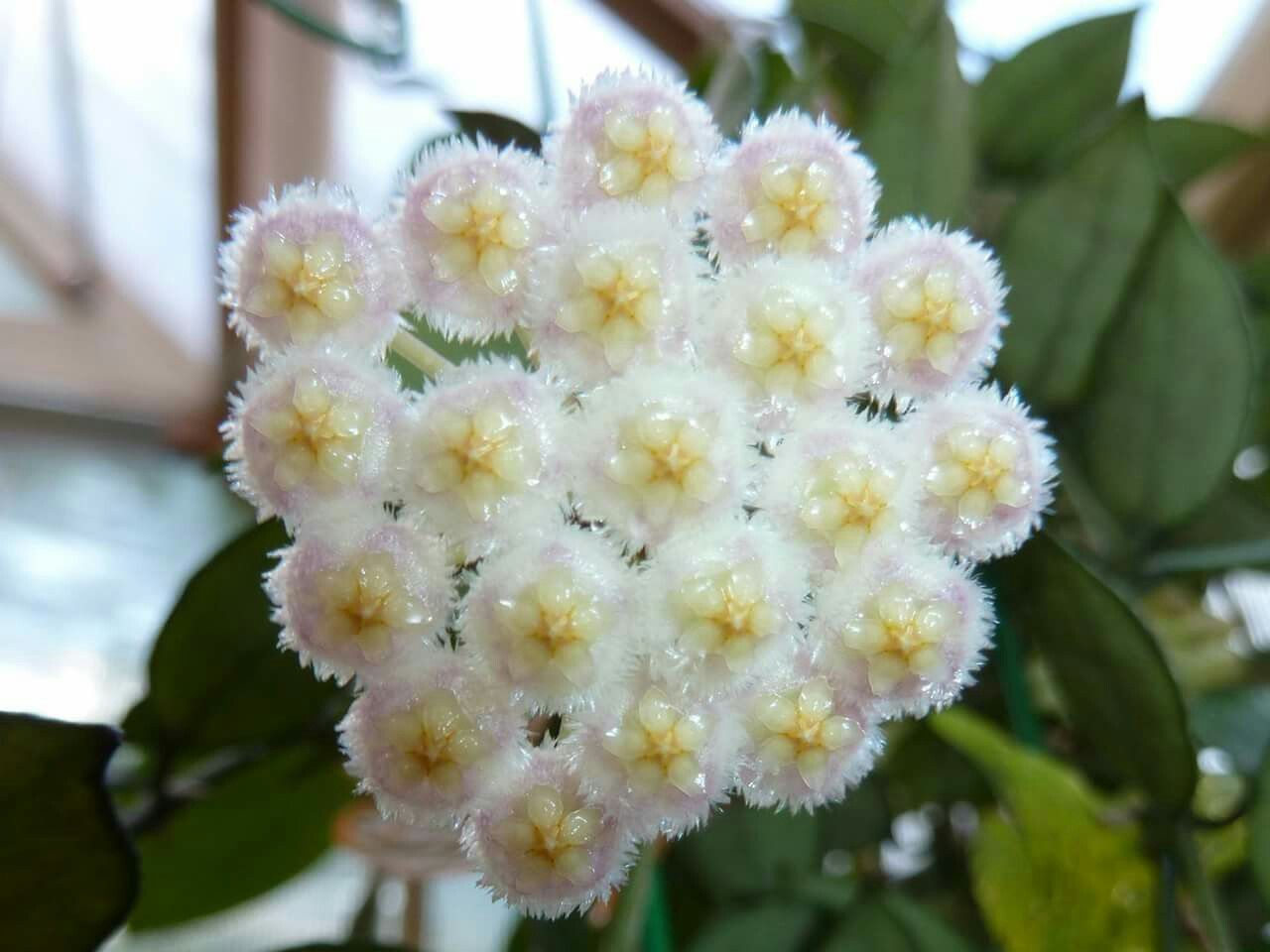Hoya plants are popular among indoor plant enthusiasts for their unique leaves, fragrant flowers, and low maintenance requirements. There are different varieties of this plant out there that seem the same at a first glance. It’s confusing to tell them apart.
So, hoya lacunosa vs krohniana – what’s the difference?
Hoya lacunosa originates from Malaysia, Thailand, and India while Krohniana originated from the Philippines. The hoya Lacunosa has thinner pointy leaves whereas the Krohniana is famous for its heart-shaped, small, and thicker leaves. The Krohniana has a sweet and mild fragrance but the Hoya lacunosa has a distinct cinnamon-like smell.
A detailed discussion will clear your idea even more between these two plants. Keep reading to know them in detail.
Hoya Lacunosa Vs Krohniana: Quick Comparison
While Hoya lacunosa and Hoya krohniana are members of the same genus, they have distinct differences in appearance, maintenance, and other factors. Here’s a quick difference between them.
| Feature | Hoya lacunosa | Hoya krohniana |
| Origin | Malaysia, Thailand, India, and Indonesia | Philippines |
| NickNames | Hoya Suaveolens, Furrowed Hoya, Waxvine, Wax Porcelain flower, Grooved Wax Flower | Silver Splash, Heart-Leafed Lacunosa |
| Leaf Shape | Pointy leaves | Heart-shaped leaves |
| Leaf Size and texture | 3-6 cm long, thinner | Less than 1 inch long, thicker and leathery |
| Flower color | Bright and white | Creamy and off-white |
| Flower smell | Sweet and cinnamon-like | Mild sweet |
| Water requirement | Once a week | Twice a week |
| USA Hardiness zone | 10a to 11b | 10 and 12 |
Hoya Lacunosa Vs Krohniana: In-depth Comparison
Origin
The Lacunosa originated from Malaysia, Thailand, India, and Indonesia while the Krohniana mainly originated from the Philippines.
Nick Names:
The common nickname for Lacunosa is Hoya Suaveolens, and the Krohniana is commonly known as Silver Splash.
Due to its similarity with Lacunosa, the Krohniana is also called Heart-Leafed Lacunosa.
On the other hand, Lacunosa has some other native names as well. For example, Furrowed Hoya, Waxvine, Wax Porcelain flower, Grooved Wax Flower, Lacuonosa wax plant, Lacunose-leaved hoya, and Cinnamon-scented wax plant.
The nicknames are important because sellers sell them by different names and you will get confused if you are not familiar with them.
Leaf Shape:
The main difference between these two plants is in the leaf shape. The Hoya Lacunosa has thin and pointy leaves whereas the Krohniana has heart-shaped leaves.
The Krohniana gets more preference among plant enthusiasts due to its distinct cordate or heart-shaped leaves.
You should note that a few leaves on a Hoya Lacunosa plant can be teardrop or heart-shaped. As a result, many plant buyers mix them with Krohniana and buy them instead. If all the leaves in a plant are not heart-shaped, then it’s not a Krohniana.
Leaf Size And Texture:

The Hoya Lacunosa leaves can grow up to 3-6 cm long while the Krohniana grows less than an inch.
Hoya Krohniana has thicker, more substantial leaves than Hoya Lacunosa. These leaves also have a more prominent rib pattern. and their thickness gives them a slightly raised, and fleshy appearance. Also, the Krohniana leaves are leathery to the touch.
Both plants have dark green leaves with beautiful silver marks on it.
Flower Color:

The flower color of Hoya Lacunosa is usually bright and white with a yellow to orange center, on the other hand, Krohniana flower is creamy and off-white in color.
Both hoya Lacunosa and Krohniana have small flowers arranged in clusters and covered in fine hairs that give the flower a fuzzy texture.
Flower Smell:
Hoya Lacunosa is known for its sweet and cinnamon-like scent while the Krohniana has a mild sweet smell.
The scent of Hoya Lacunosa can be quite intoxicating as many people love the spicy cinnamon smell. It will remind you of a freshly baked cinnamon roll. On the other hand, the scent of Hoya Krohniana is also quite similar and sweet to Lacunosa, but it doesn’t have a spicy smell.
Just like these two plants, macrorrhiza vs alocasia odora is also a popular debate due to their smells.
Water Requirement:
The hoya lacunosa has less water requirement than the krohniana. You only have to water a hoya lacunosa once a week. On the other hand, krohniana needs watering at least twice a week.
For both plants, you have to make sure there is proper drainage in the pot and the soil doesn’t stay soggy. Otherwise, the growth will be reduced and the plant can even die. Also, due to overwatering, the leaves can get curled up. You will often face this problem with where your sage plant’s leaves get curled.
USA Hardiness Zone:
Hoya lacunosa is suited to USA hardiness zones 10a to 11b, while Hoya krohniana is suited to zones 10 and 12. So, krohniana can survive within a wider temperature range.
According to the USDA hardiness zone map, Hoya lacunosa is suited to grow in zones 10a to 11b, which means in between temperatures 30°F (-1°C) to 50°F (10°C). These zones are located in the southernmost parts of the United States, including parts of Florida, California, and Hawaii.
On the other hand, Hoya krohniana is also a tropical plant that is suited to grow outdoors year-round in zones 10 and 12. Here, the average annual minimum temperature ranges from 30°F (-1°C) to 60°F (15.5°C).
These are also the southernmost part of the USA. but unlike hoya lacunosa, the krohniana can survive the extreme heat of all the Hawwai and Puerto Rico.
Hoya Lacunosa Vs Krohniana: Which One To Choose?
If you like plants with small heart-shaped leaves you can go for Krohniana. Also, if you happen to live in the USA hardiness zone 12, that means in a hot region, this is a better choice for you.
On the other hand, if you are a fan of cinnamon and love its smell, you will like the hoya Lacunosa better. It is also good if you often forget to water your plants.
As low-maintenance plants, you can also consider Rhaphidophora Decursiva and Tetrasperma. Although Decursiva and Rhaphidophora have some dissimilarities, both are great houseplants.
Frequently Asked Questions (FAQs):
Is Hoya Toxic?
Yes, almost all Hoya plants including Hoya lacunosa and krohniana have low to moderate toxicity. If you have pets or small children, make sure to keep toxic plants out of their reach. This can be done by placing them on high shelves, using plant stands, or keeping them in a separate room.
Which Hoya Is Most Fragrant?
Hoya Nummularioides is considered the most fragrant Hoya there is. The smell is unique and strong and you can distinguish it from even 3 feet away. Hoya Sunrise, Hoya Linearis, and Hoya carnosa are also very frangrantful.
What Type Of Fertilizer For Hoya?
A balanced, water-soluble fertilizer with equal amounts of nitrogen, phosphorus, and potassium, such as a 2-2-2 is suitable for fertilizing Hoyas. Dilute the fertilizer to half-strength or less, and apply it once every 6 weeks during the growing season, avoiding contact with the foliage.
Conclusion
Here goes my verdict on Hoya Lacunosa vs Krohniana. I hope after reading this article, the differences between them are more clear to you now.
Although they require minimal care, you should give them enough water, fertilizer, and sunlight. And as both plants are toxic, keep them away from pets and children.
That’s all for now. Happy gardening!
- Why Are There Still No Tomatoes in My Tomato Plants? Let’s Fix the Issue! - July 13, 2023
- Water Propagation White Stuff on Roots: Everything You Should Know! - July 11, 2023
- String of Dolphins Drying Up: Solved! - July 11, 2023
